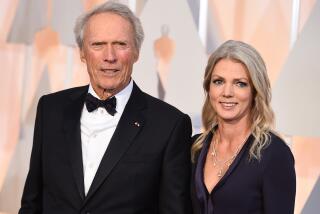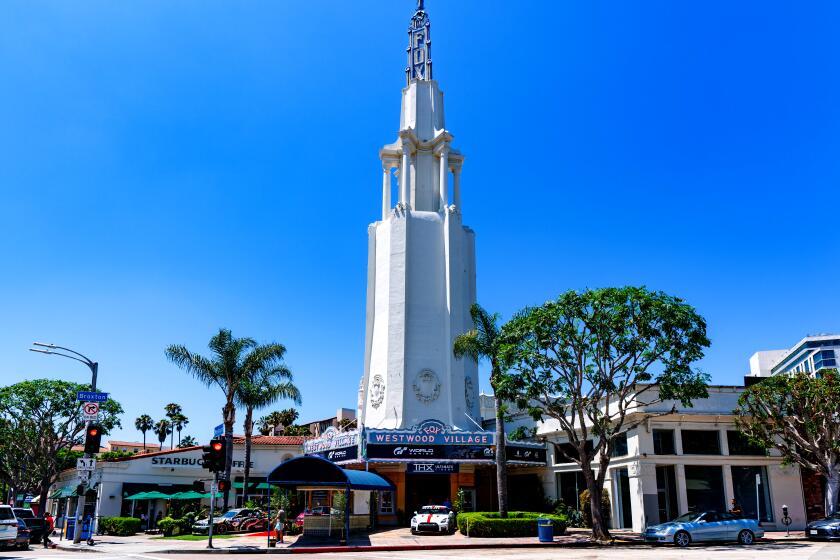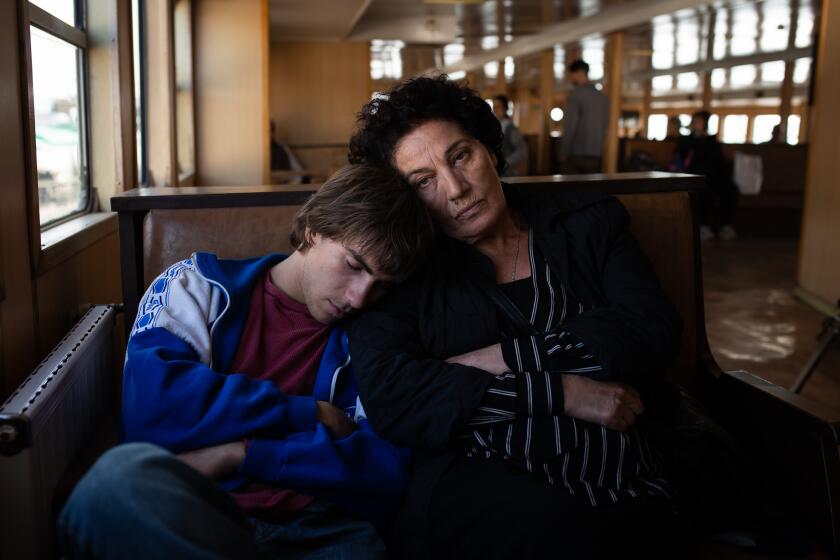MOVIES : As Complex as Black and White : ‘White Man’s Burden’ unfolds in a society where the dominant culture is African American--and segregated test screenings show that different races view the premise rather differently.
A funny thing happened at the test screenings of “White Man’s Burden,” the race-bending John Travolta-Harry Belafonte drama that opens nationwide Friday: The audience laughed. Or rather, half the audience.
At back-to-back screenings on July 5--same cut, same theater, but with one an all-African American audience and one an all-white audience--the filmmakers and executives said that at first they were baffled by the wildly different reactions of the two groups.
“It was two different movies,” says writer and first-time director Desmond Nakano, whose previous writing credits include “Last Exit to Brooklyn” and “American Me.” “For the white audience, it was much more of a drama--heavier and more intense. But some of the black audience thought it was almost a comedy.”
The film’s premise is simple: What if African Americans were the dominant culture in America, and whites an oppressed minority? In the film, Travolta plays a hard-working factory worker who, desperate to provide for his family after unfairly losing his job, kidnaps the racist CEO who unwittingly got him fired (Belafonte). For simplicity’s sake, the filmmakers limited the world to fable-like archetypes--wealthy, educated blacks and poor, ghettoized whites.
Though satire is obviously built into the premise, the film was played as a drama, not a comedy. But from the opening scene--an elegant dinner party where Belafonte’s wealthy black guests are being waited on by a hefty white maid--the black test audience roared with laughter, according to the filmmakers. More laughter followed when Travolta drove past black-owned Beverly Hills mansions. More laughter still when Travolta’s 6-year-old son chose a black superhero doll as his birthday gift--to his father’s visible dismay.
“I thought I might get a chuckle or something like that, but there were places where [laughter drowned out] some of the dialogue,” says producer Lawrence Bender (“Pulp Fiction”), who turned to French production/distribution giant UGC for full financing after skittish Hollywood studios politely passed. (Rysher Entertainment later bought the North American rights and chose Savoy to release the film.) “For whatever reason, the black audience automatically gave themselves permission to laugh, where the white audience didn’t . . . [perhaps] because of the political sensitivity to it.”
But were African Americans laughing with the movie or at it?
“The laughter was not at all derisive,” Nakano says. “I think the black audience recognized images of themselves that were turned upside down, and they enjoyed seeing the reversal, seeing the shoe on the other foot. . . . Whereas the white audience, it took them a little while, where they’re watching it and saying, ‘Uh oh, what’s going on here?’ ”
Static clinging to the status quo may have played a part in the more subdued, “contemplative” mood at the white screening. But some of the urban (read “ghetto”) references in Travolta’s white (read “black”) world may simply have flown over the heads of many in the white audience.
Example: Travolta’s son, after moving to the projects and getting in a fight with local boys, tells his father, “They asked me who I was and where I was from.”
“That’s a very specific kind of gang thing--what territory you’re from,” says Nakano, who is Japanese American. “It’s not a big point, but the black audience immediately responded to that, because they knew exactly what it was. Whereas for the white audience it was just, ‘Gee, they just asked him where he was from, and then they had a fight with him?’ Blacks have an understanding of the general white culture--they’re bicultural--but with the more specific black culture, a lot of whites have no clue.”
But Nakano is quick to note that the atmosphere at both the black and the white screenings began to dovetail and move in sync about halfway through the film, as the story focused more and more on the relationship of the two men and less on the black/white reversal.
Heated discussions at both screenings continued outside the theater after the audiences were dismissed, with debates often divided by generation between young and old. Was the film accurate in its portrayal of social inequities, as younger audience members claimed? Or did it portray a falsely uneven playing field that didn’t reflect the racial strides forward among the races, as older members argued?
Rysher CEO Keith Samples found the all-black screening both “enlightening” and “a little bit jarring.” “You go through life and you see things through your point of view, and you think you’re a pretty smart guy and you can figure it all out. But there’s no question that the world can be viewed through different eyes, and two people can look at the same thing and have a vastly different perception of it.”*
More to Read
Only good movies
Get the Indie Focus newsletter, Mark Olsen's weekly guide to the world of cinema.
You may occasionally receive promotional content from the Los Angeles Times.






